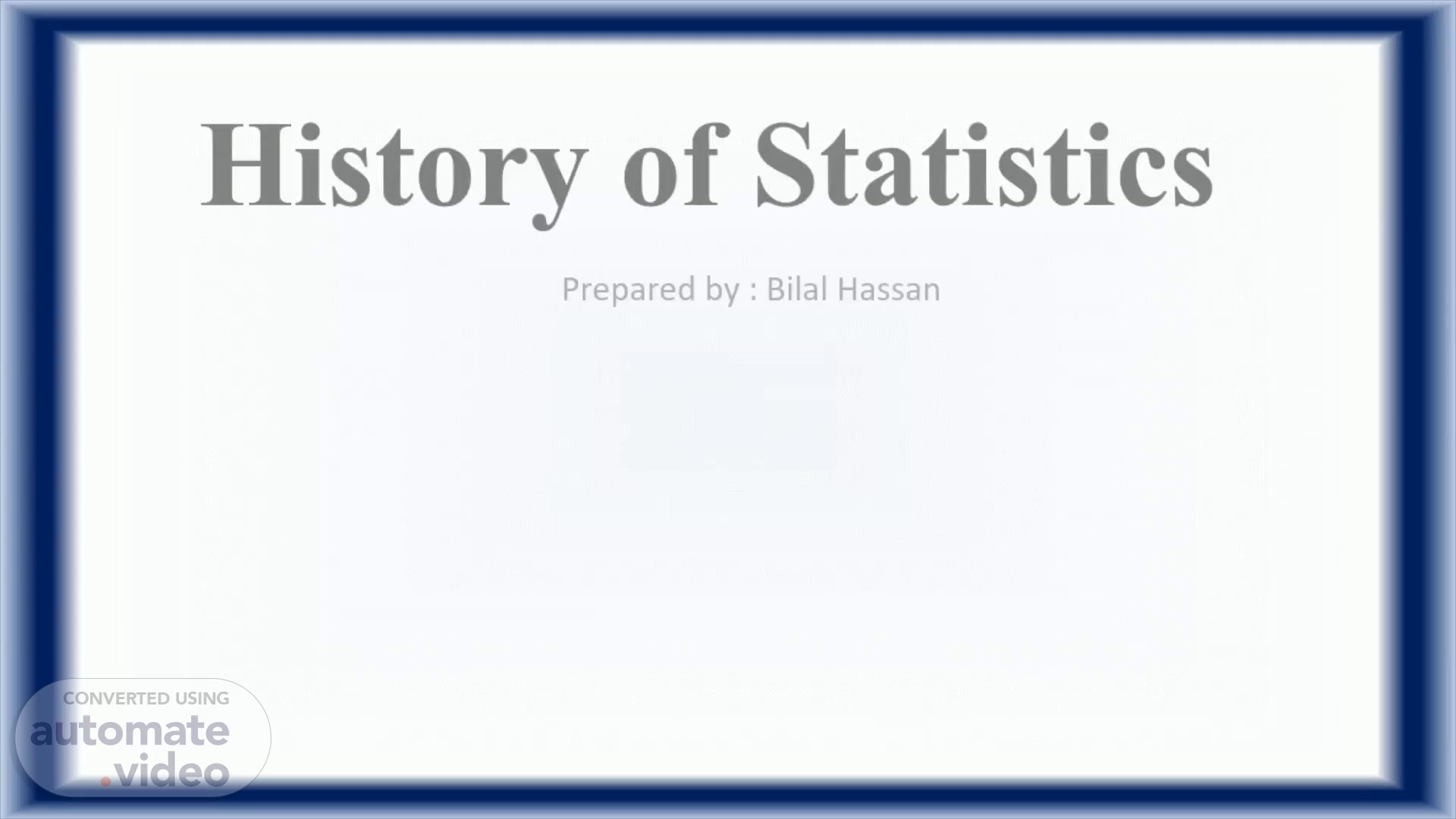
PowerPoint Presentation
Scene 1 (0s)
[Audio] History of Statistics Prepared by : Bilal Hassan Department of Statistics Phone no: 0343-8547080 Email:18201513-041@uog.edu.pk.
Scene 2 (24s)
[Audio] History of Statistics The Word statistics have been derived from Latin word “Status” or the Italian word “Statista”, meaning of these words is “Political State” or a Government. Shakespeare used a word Statist is his drama Hamlet(1602). In the past, the statistics was used by rulers. The application of statistics was very limited but rulers and kings needed information about lands, agriculture, commerce, population of their states to assess their military potential, their wealth, taxation and other aspects of government..
Scene 3 (1m 4s)
[Audio] Basic forms of statistics have been used since the beginning of civilization. Early empires often collated censuses of the population or recorded the trade in various commodities. The Roman Empire was one of the first states to extensively gather data on the size of the empire's population, geographical area and wealth. During the 20th century several statistician are active in developing new methods, theories and application of statistics..
Scene 4 (1m 36s)
[Audio] Now these days the availability of electronics computers is certainly a major factor in the modern development of statistics. In the time of Ancient Greece the Philosophers contribute Ideas-no quantitative analyses. In the time of 17th Century the Graunt, Petty Pascal, Bernoulli contributes studied affairs of state, vital statistics of populations studied probability through games of chance, gambling. In the time of 18th Century the Laplace and Gauss contributes in normal curve, regression through study of astronomy.
Scene 5 (2m 13s)
[Audio] In the time of 19th Century Quetelet Galton astronomer who first applied statistical analyses to human biology studied genetic variation in humans used regression and correlation. In the time of 20th Century (early) Pearson Gossett (Student) Fisher studied natural selection using correlation, formed first academic department of statistics, Biometrika journal, helped develop the Chi Square analysis studied process of brewing, alerted the statistics community about problems with small sample sizes, developed Student's test evolutionary biologists developed ANOVA, stressed the importance of experimental design.
Scene 6 (2m 54s)
[Audio] In the time of 20th Century Wilcoxon is a biochemist who studied pesticides, non-parametric equivalent of two samples test. Kruskalis and Wallis are economists who developed the non-parametric equivalent of the ANOVA. Spearman is a psychologist who developed a non-parametric equivalent of the correlation coefficient. Kendall is a statistician who developed another nonparametric equivalent the correlation coefficient..
Scene 7 (3m 25s)
[Audio] Tukey is a statistician who developed multiple comparisons procedure. Dunnett is a biochemist who studied pesticides, developed multiple comparisons procedure for control groups. Keuls is a agronomist who developed multiple comparisons procedure. Computer Technology provided many advantages over calculations by hand or by calculator, stimulated the growth of investigation into new techniques..